How to Line a Crochet Bag
This post may contain referral/affiliate links. Please read my disclosure for more info.
Have you been wondering how to line a crochet bag? If so, this tutorial is for you!
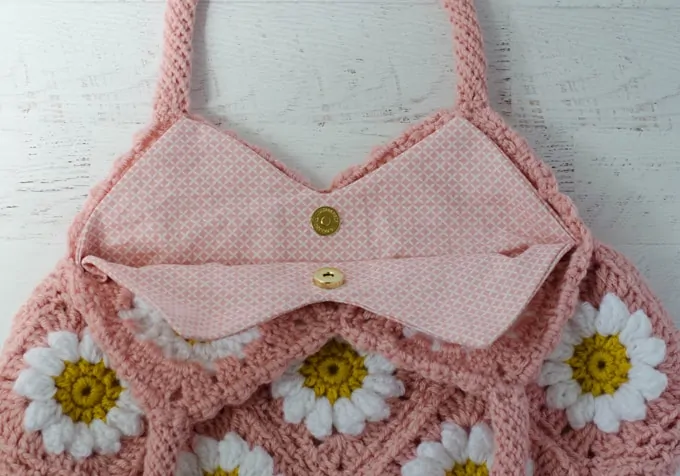
We will cover everything you need to know to sew a bag lining custom fit to your bag!
I love to sew linings for my crochet bags. If you put a lot of things into a crochet bag you can sometimes wind up with two problems: Either little things slip through the stitches and fall out or your bag stretches and looks all out of shape.
I don’t like either of those scenarios, so often I’ll take the extra time to sew a custom fit lining for my crochet bags, like I did for this cute Crochet Daisy Bag:
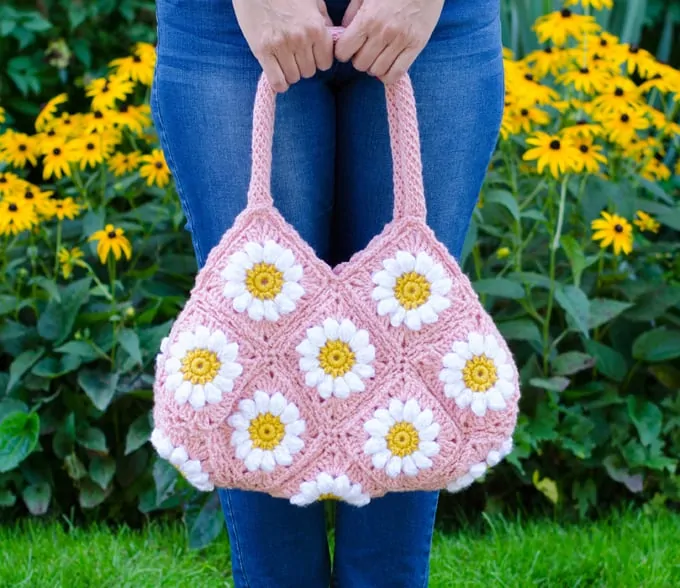
Bag Lining Decisions
A bag lining requires some decisions to be made up front: Do you want a pocket? Do you want a closure? Do you want your fabric to be two thicknesses or just one? Let’s talk about these considerations one at a time:
Pockets. I love pockets. Mostly for my cell phone, but the more pockets the better in my mind. In this example, we’re keeping things simple with a patch style pocket. (If you are a more experienced sewer and want to get into bag making at a higher level, I’d recommend picking up a Swoon Sewing Bag pattern with a zippered lining pocket.)
You can choose a closure or leave it off. I personally don’t enjoy having my bag fall open as that always seems to happen at the exact wrong time. So I’m opting to install a magnetic purse snap in my lining for this example. It’s an easy way to keep a crochet bag closed, in my opinion.
Finally you need to decide if you want your lining 1 thickness or a double thickness. If you go with one thickness, then the raw edges of your fabric will be facing the inside of your crochet work. That could be fine. But it might not be if your crochet work has a lot of holes.
Another reason for a double thickness is if you want one color inside the bag, but would rather have a color that blends more with your yarn color in case the color peeks through your crochet work.
Finally, f you are making a lining, I suggest waiting to sew the handles on until after you trace out your lining pattern onto paper. After that is done, go ahead and sew on the handles.
Note: for this tutorial, I’ve revised some of the photos with an in-progress bag I’m working on. So you’ll see a mix of photos from the Daisy Mae Bag and an upcoming project.
Crochet Bag Lining Materials
- 1/2 yard of fabric (this is enough to do single layer of fabric lining plus pocket)
- 1-1/4 yard of fusible woven interfacing (Pellon Shapeflex SF101)
- Scraps of fusible heavy stabilizer (Pellon Peltex 71F) (only if using a magnetic snap)
- Magnetic Purse Snap
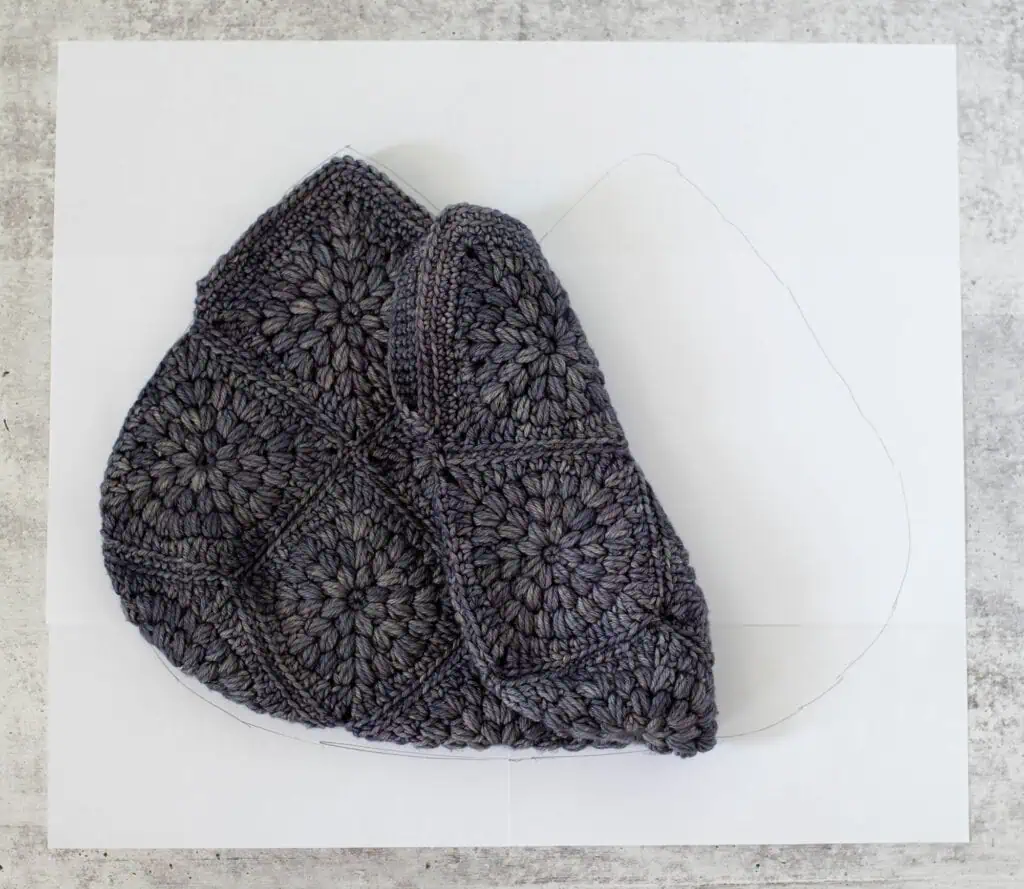
How to Make Lining Pattern
Tape together 4 sheets of 8.5 x 11 paper or lay out enough paper to trace out your purse.
Lay purse on paper and use a pencil to trace around purse. This is easier if you have not sewn down the handles.
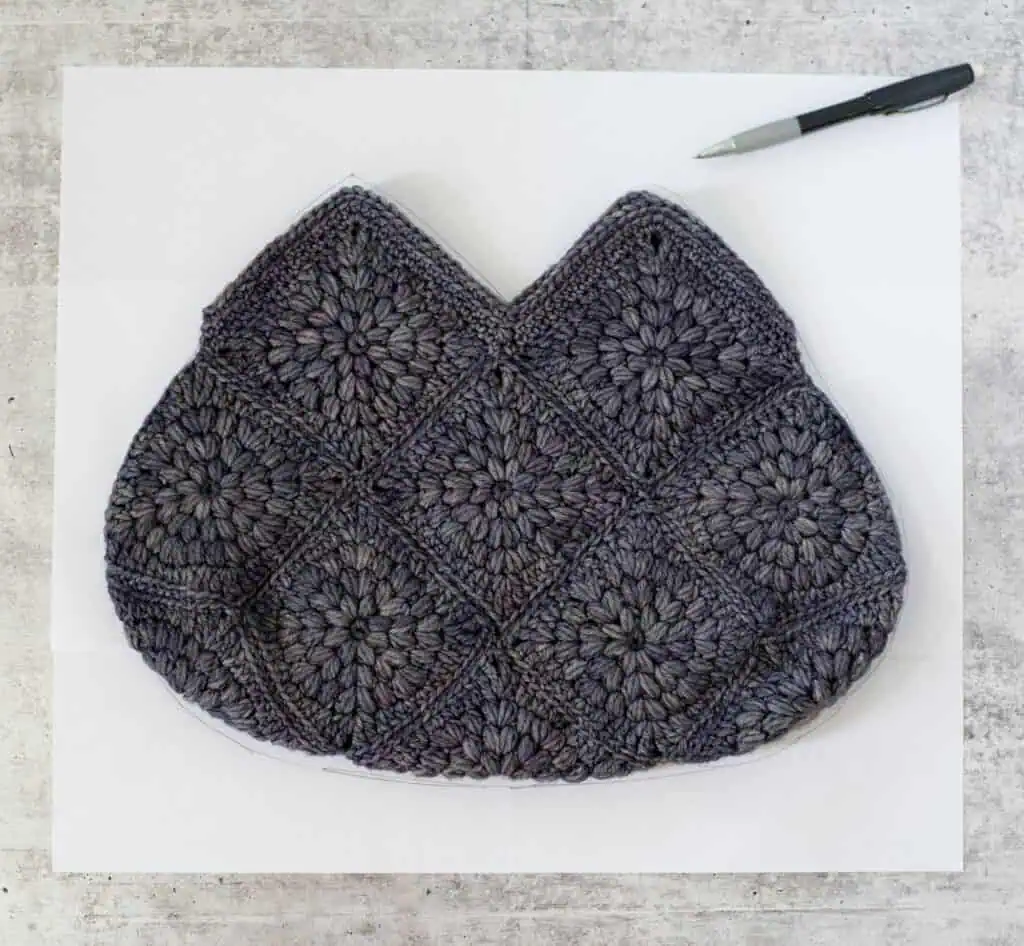
When you take the purse off the piece of paper you have something that looks like the above photo. NOW you need to “fix” the drawing before cutting it out to use as a pattern.
First, fold the paper in half vertically so that the fold is along the center of the bag top to bottom. Measure from the top peak to each side about 2.75 inches and mark that point on the line you have drawn.
Start drawing a new line from this point gradually out to 1/2 inch from the original line and then continue that line around the side and bottom of the bag. This new line is going to be the cutting line for the pattern.
Note that the top points and center will NOT have the added 1/2 inch and the rest of the bag will. This is so the lining fits properly inside the crochet bag when it is finished.
Cut out the paper pattern. Unfold the paper and both sides will match in size. Don’t worry about any imperfections (it is ok if the 1/2 inch marking on the opposite side doesn’t exactly line up). You are creating a custom pattern to your own purse.
Prepare Fabric
Iron fabric. Then following manufacturer instructions, iron on the interfacing. I find it is easiest to do this prior to cutting out the bag. If you want to conserve interfacing, you might want to cut out all the pieces of the bag and pocket out of fabric and then the same pieces out of interfacing and fuse them afterward.
Lay pattern on a double thickness of fabric, pin and cut out two purse pieces (a front and a back)
From remaining fabric, cut (2) 8″ x 7″ squares for the pocket. Prior to sewing, both the front and back of the bag should have interfacing, as well as both sides of the pocket.
Sew the Pocket
Using a 1/2″ seam allowance, pin right sides of pocket together. Sew the pocket together on 3 sides, starting with a short side, working across a long side and then down the other short side. Leave the bottom open. Clip corners, turn pocket and iron flat. Top stitch about 1/8″ away from the top folded edge, if desired.
Then center the pocket on one of the bag sides, lining up the unfinished edge with the bottom edge of the bag and pin. The unfinished edge of the pocket will be encased in the lining seam when you sew the front and back of the lining together. Sew the 3 sides of the pocket down.
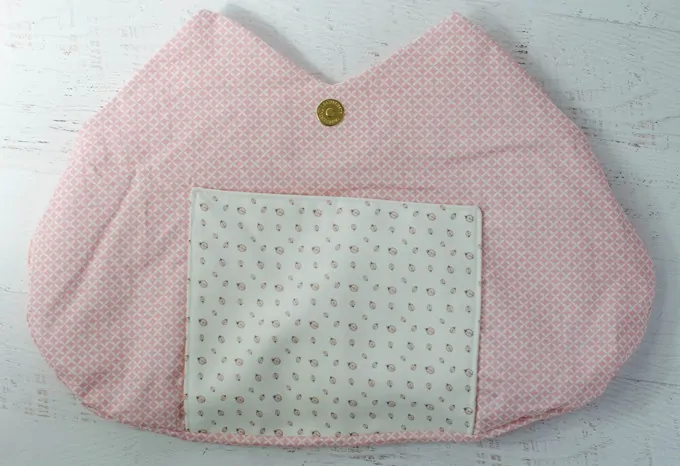
Prepare the Top Edges and Insert the Snap
Turn over the top edges of the bag (approximating where the bag will open) and press over the top edge 1/2″ to the wrong side. Note that you may have to clip corners a bit so that it lays nicely. Determine where the snap will go. Cut a piece of iron on stabilizer about 1-1/2″ square and iron on behind this location.
Then follow directions included with the snap to attach the snap through the stabilizer. You must use the stabilizer or something firm to secure the magnetic snap. Otherwise the magnet is so powerful, it could pull the snap and rip the fabric. Ask me how I know this.
Sew the Sides and Bottom of the Lining
Put right sides of bag together and sew the sides and bottom, using a 5/8″ seam allowance, leaving the top of the bag open. (Yes, I do know that you allowed for only 1/2″ extra in your pattern; trust me, you need to sew at 5/8″ for the lining to fit properly inside).

Attaching the Lining to the Granny Square Purse
Turn lining so that the right side is on the inside and the wrong sides are facing out. Slip lining into fabric purse. Pin top edges, lining up the lining and purse so that the lining fills up the bottom and sides of bag and the top edge is about 1/2″ below the top edge of the bag. Using thread and needle, hand sew the lining to the opening of the bag.
Sewing A Double Thickness of Fabric Bag
If you are new to sewing, I would stick with the one fabric thick version as described in this post. However, you might have noticed that I actually sewed a double thickness on this example photo.
I have mixed feelings on it. I feel like it made it extra thick. If you do want to try it, you would cut out and sew an additional front and back together (not interfacing needed). Then you would put right sides together and sew the opening at the top together, remembering to leave a spot open for turning. There’s a lot of clipping and fussing to get the points to look nice, which is why I really recommend a one thickness bag.
Daisy Mae Bag
The ad-free version of the Daisy Mae Bag includes a tutorial with photos for sewing a lining, the faux braid join and the stunning spiral crochet handles:
print & stitch
Purchase the Beautifully Crafted AD-FREE PDF Download Today
Do you just want to relax and crochet? This nicely formatted pattern features clear instructions and perfectly sized photos for a more enjoyable crochet experience.
Get the free pattern here or purchase an ad-free pattern on Etsy or Ravelry
I love seeing your finished projects! If you enjoyed making one of my patterns I’d love to see yours on Instagram, be sure to tag me @crochet365knittoo. If you are on Facebook, stop over to the Crochet 365 Knit Too Facebook page or pop over to the Crochet365KnitToo Club and share a photo! I’d love to see your work!
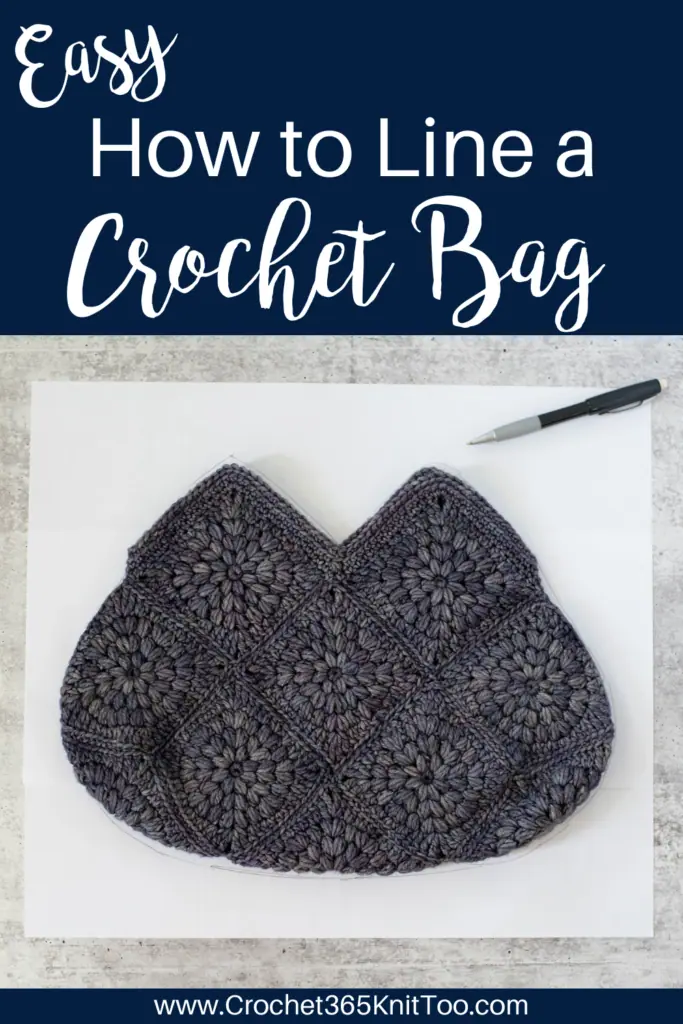

is there a pattern for the gray bag?
It is a work in progress but will be coming to the blog soon!